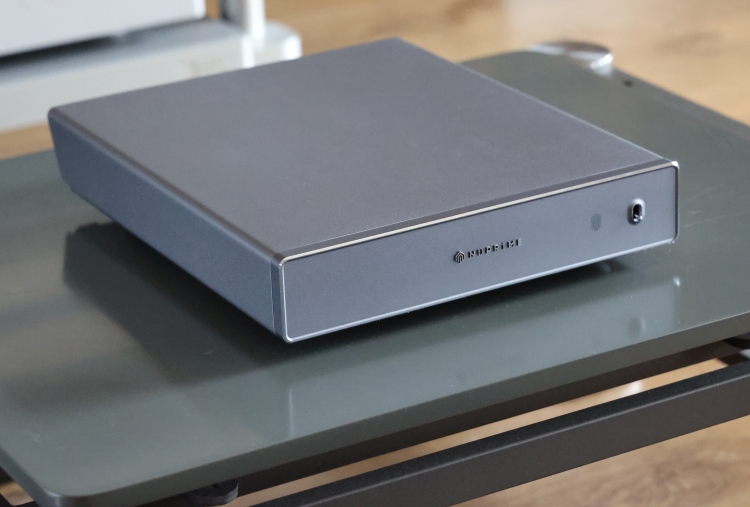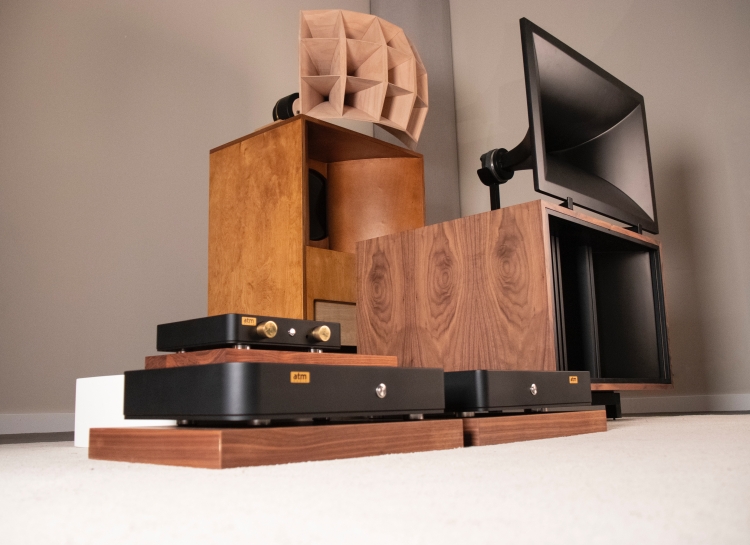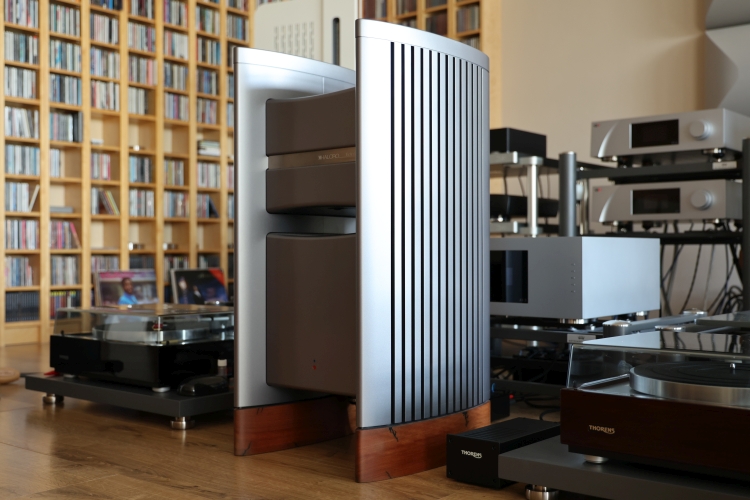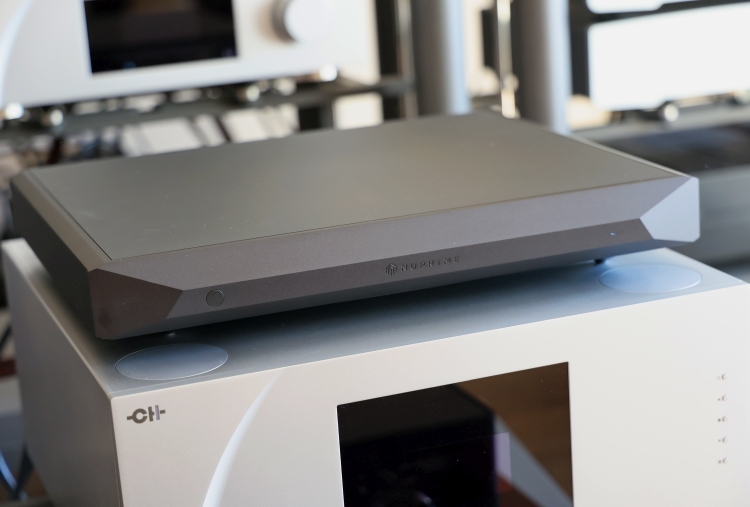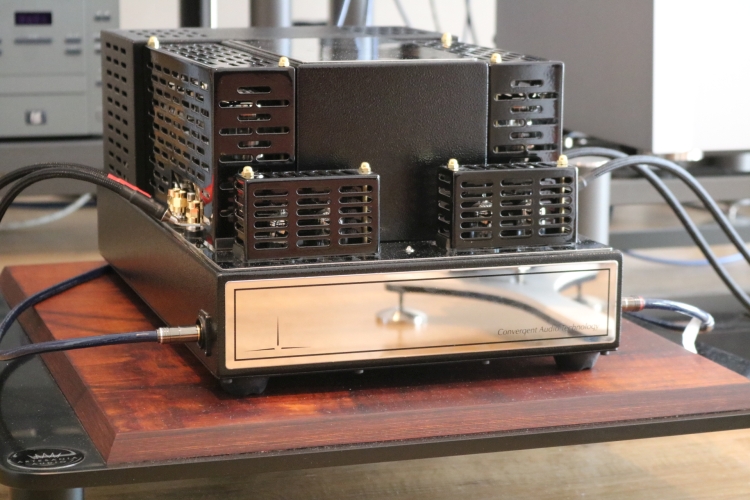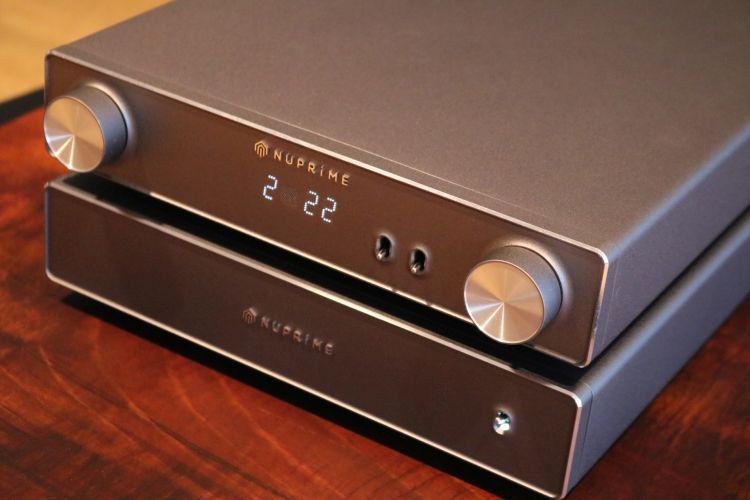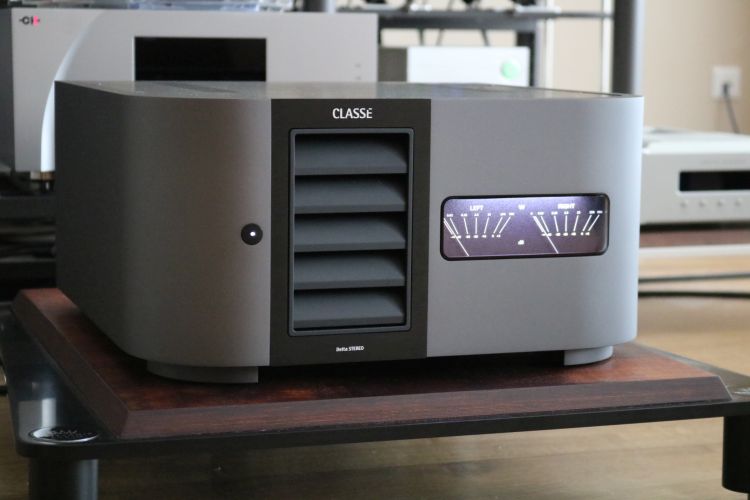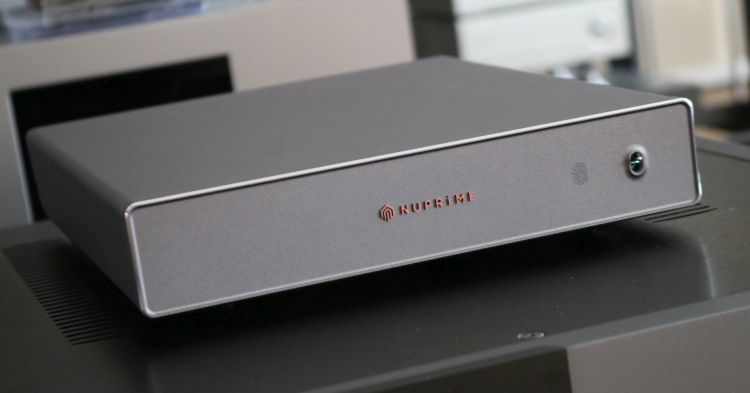Audio Aero TransTRAC Hybrid tube/transistor poweramp – Mini Review
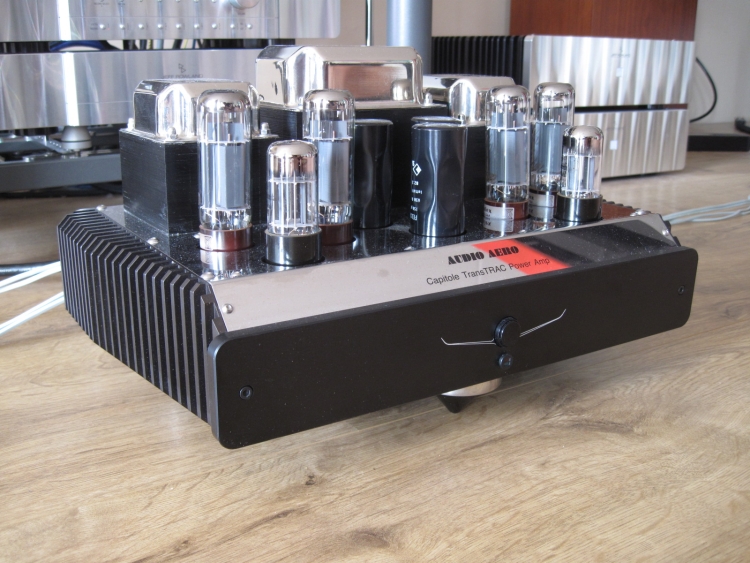
Audio Aero TransTRAC compared to Jadis JA30
Once again my friend Jan Cramer brought something along. Something with tubes this time. I have never been fond of tubes, not because I don’t like their sound, but because they can be so fiddly and prone to breakdown. This amp however is whisper-quiet and thus far seems to be entirely fiddle-free.
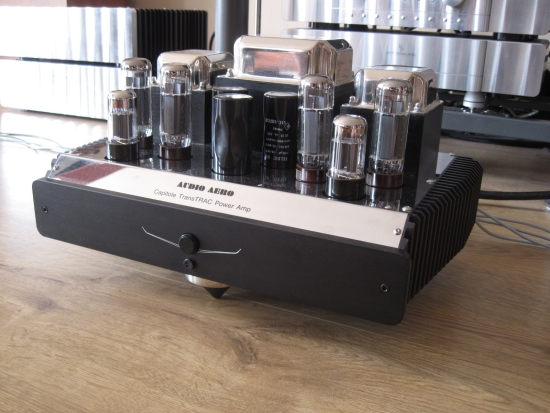
Above: the TransTRAC has a little bit of “theater stage” going on: it is like a nice stage with players neatly organized.
Introduction
The TransTRAC is a hybrid tube/transistor amp. Not in the way you would expect but with transistors and tubes actually working in parallel. the power output stage. The power tubes are EL34 type and the transistors are DMOS-FETs. TransTRAC stands for Transistor Tube Relay Amplification Concept and whatever that means, apparently it works well! The amplifier has single-ended and XLR inputs and is capable of delivering 40watts on its single outputs. At the moment of receipt it was equipped with Tung-Sol 6SN7 input tubes and Mullard EL34 power tubes.
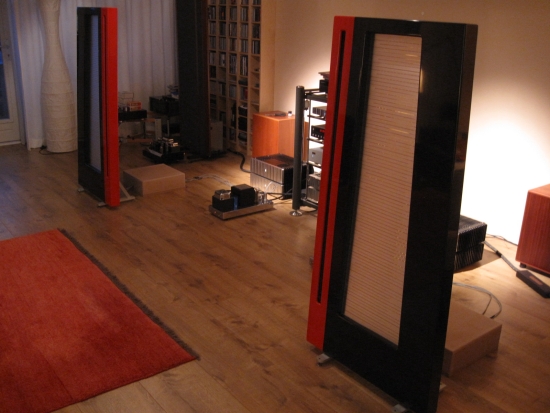
First listen
The amp was connected directly to the Jeff Rowland Aeris DAC, using Cardas Hexlink cinch cables. Power was supplied via a Lapp cable with Furutech FI15 Rhodium and FI-E35 Gold connectors. Just for fun I connected the amp to the Apogee Duetta Signature magnetostats, thinking it wouldn’t be a good match. At around 3 ohms the Duetta Signature may not be an amp killer, its lowish sensitivity (86dB) means that it does like a good dose of power and I expected the TransTRAC to sound completely lifeless. Nevertheless, the combination worked surprisingly well at some level. The amp needs about 30-60 minutes of warmup time, sounding too transistory in the beginning but nicely warming up after 30 minutes, slowly improving thereafter. The sound after that is as you’d expect from a triode amplifier: smooth, warm, rich yet with a twist: although hardly vice-like, there was tighter bass that I’d anticipated! That’s no doubt due to the transistor part. But overall I wasn’t really happy, missing the detail, dynamics, focus and subtlety that the model sixes do deliver. Overall the sound was just too smooth and too relaxed. But apart from that, technically the amp was doing fine, only mildly compressing at loud levels, and there was absolutely no hum or hiss – the TransTRAC is whisper-quiet! (on these low sensitivity speakers anyway)
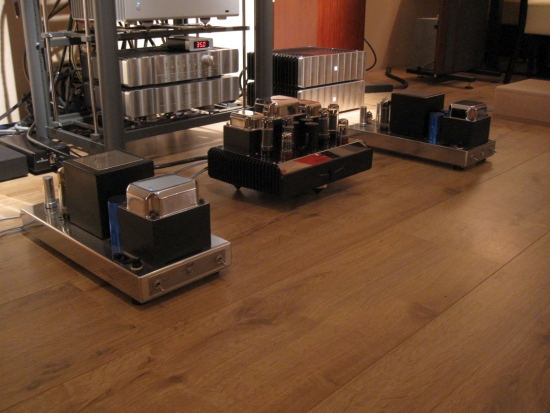
Above: Two Jadis JA30’s flanking the TransTRAC
Comparisons
In came the Jadis JA30’s from a friend, equipped with factory-standard KT90 tubes. I figured it was better to compare like with like and even though the JA30’s are much more expensive than the TransTRAC (8000 euro versus 5400 euro) still it was a closer match than to compare with my model sixes. The JA30’s were connected using the same interlinks and powercable and they also need some warmup time but I had the feeling that they were up to speed much more quickly. Right at the beginning and just after powering them up they already sounded a great deal better than the TransTRAC: more emotional, more spacious, more living-and-breathing, also much more of a whole and therefore more engaging. The JA30’s had less articulate bass but on every other aspect, I found them to be much better.
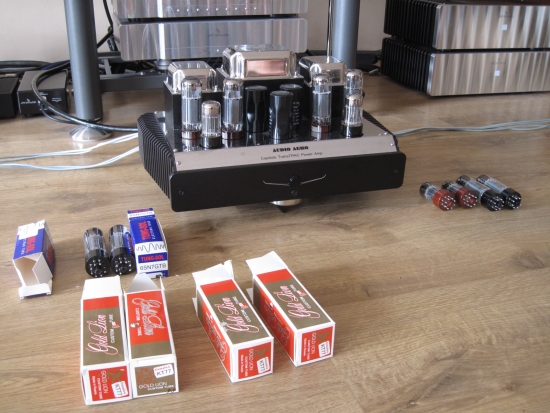
Closing off
Near the end of the listening session, at around 02:00 AM we started playing several deep house tracks at loud volumes through the TransTRAC and enjoying it very much. The sound was very involving and no matter how loud we played, the amp never gave in. Remember that we’re still talking about a 40-watt tube amp driving a pair of Apogee Duetta Signatures!
By now my opinion of this amp was pretty positive. However on another day during the next listening session with another visitor, playing some classical music, it was painfully evident that the amp didn’t supply enough power to bring the Apogees to live as they should, resulting in a sweet sound but with flat dynamics. Switching to the model sixes restored this balance and made the music more engaging. But of course this is asking too much of this fine amp. I should use it with much more sensitive speakers. But as there are many other reviews waiting with higher priority, I will have to leave it at this.
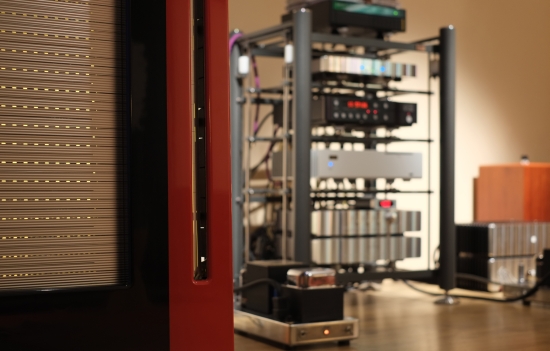
Above: The owner of the JA30’s also brought along his new camera: an upscale Fujifilm Xpro1 and in spite of the bad lighting conditions, I think it is obvious that it is a far better camera than the Canon Ixus 980IS that I own. Below is a nice comparison between this camera and my own, just for show…
Conclusion
This review was done a little quicker than is the norm for me, but I have a long list of reviews to do and this one (fun though it was) isn’t top priority, so please forgive me for cutting some corners. The Jadis JA30’s really surprised me. In an earlier review complete with the owner’s JP80 preamp and combined with the Martin Logan SL3’s, the sound was lush and rich but very slow and lacking drive and attack. Now, many years later, with the Apogees and minus the JP80 preamp, the JA30’s come back, with a vengeance! They are much better than I thought they were: not only are they emotionally engaging, they can also pack some punch. They are pure emotion machines: not perfect (lacking some bass precision/articulation and midrange focus) but they get the emotional message across 100%. Also, they have airy and extended treble and manage to sound more forgiving than my Rowland model sixes on the Apogees. The latter, admittedly, can be a little rough and hard in the upper midrange/lower treble, which I attribute to them being revised with new Graz membranes and new filter components.
While both the TransTRAC and JA30’s coped admirably, neither should really be partnered with these Apogees. But still I found it a fun exercise!
The Audio Aero TransTRAC, with new tubes, are on some parts even better than the JA30s: more dynamic and with better bass drive and snap. Also this amp has slightly better focus and a more forward sound than the JA30’s. Either tube amp renders an engaging picture and I must admit that even if I still don’t like tubes for their impracticalities, they do indeed seem to be able to provoke magic from speakers more easily than even Jeff Rowland power amps.
The model sixes on the other hand have better soundstage layering and focus, tigther, more articulate bass and even more extended (airier) treble which is actually more finely resolved then either tube amp. They are absolutely never coarse or otherwise “transistory” but the JA30 (and TransTRAC alike), while less precise, are clearly more forgiving, and actually make for a very synergetic match with the Apogees. I imagine that beefier tube amps or a combination of Rowland on the bass and tubes on treble could possibly be heaven.
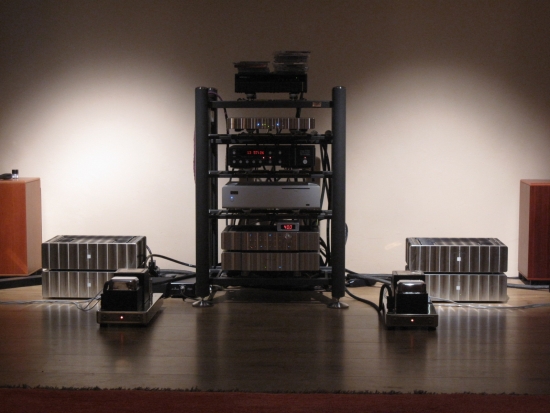
Above: Lighting conditions are poor but just about doable for my simple Canon Ixus 980IS camera. But once you compare my photo’s with those made with a friend’s very costly Fujifilm camera, the differences are clear. It’s mostly in bad lighting conditions though that camera quality differences are clearest.
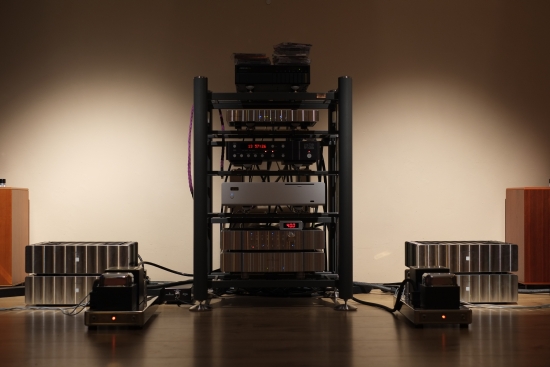
Above: Picture taken at the same moment as the one above, but with my friends Fujifilm Xpro1. It’s not just that the colors are warmer, light-dark balance is also better and somehow the shiny pattern on the Rowland looks more tasteful on this picture. The Fujifilm is also a digital camera, but I’d be tempted to say that this picture looks somehow more analog than the picture taken with my own camera…
